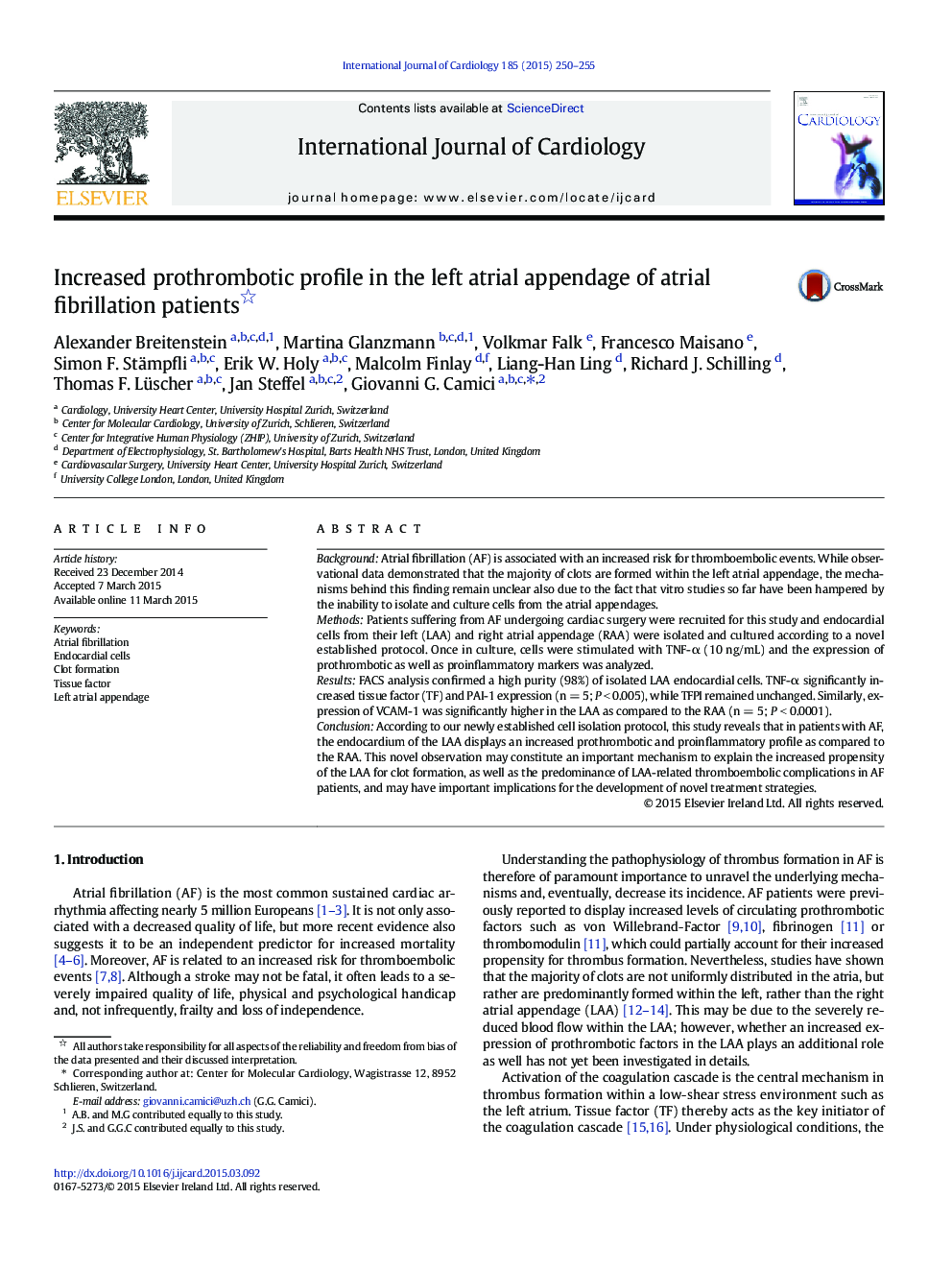| Article ID | Journal | Published Year | Pages | File Type |
|---|---|---|---|---|
| 2929091 | International Journal of Cardiology | 2015 | 6 Pages |
BackgroundAtrial fibrillation (AF) is associated with an increased risk for thromboembolic events. While observational data demonstrated that the majority of clots are formed within the left atrial appendage, the mechanisms behind this finding remain unclear also due to the fact that vitro studies so far have been hampered by the inability to isolate and culture cells from the atrial appendages.MethodsPatients suffering from AF undergoing cardiac surgery were recruited for this study and endocardial cells from their left (LAA) and right atrial appendage (RAA) were isolated and cultured according to a novel established protocol. Once in culture, cells were stimulated with TNF-α (10 ng/mL) and the expression of prothrombotic as well as proinflammatory markers was analyzed.ResultsFACS analysis confirmed a high purity (98%) of isolated LAA endocardial cells. TNF-α significantly increased tissue factor (TF) and PAI-1 expression (n = 5; P < 0.005), while TFPI remained unchanged. Similarly, expression of VCAM-1 was significantly higher in the LAA as compared to the RAA (n = 5; P < 0.0001).ConclusionAccording to our newly established cell isolation protocol, this study reveals that in patients with AF, the endocardium of the LAA displays an increased prothrombotic and proinflammatory profile as compared to the RAA. This novel observation may constitute an important mechanism to explain the increased propensity of the LAA for clot formation, as well as the predominance of LAA-related thromboembolic complications in AF patients, and may have important implications for the development of novel treatment strategies.
